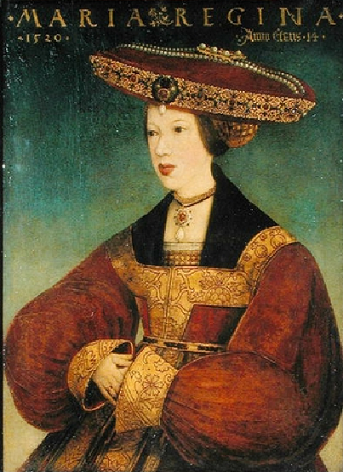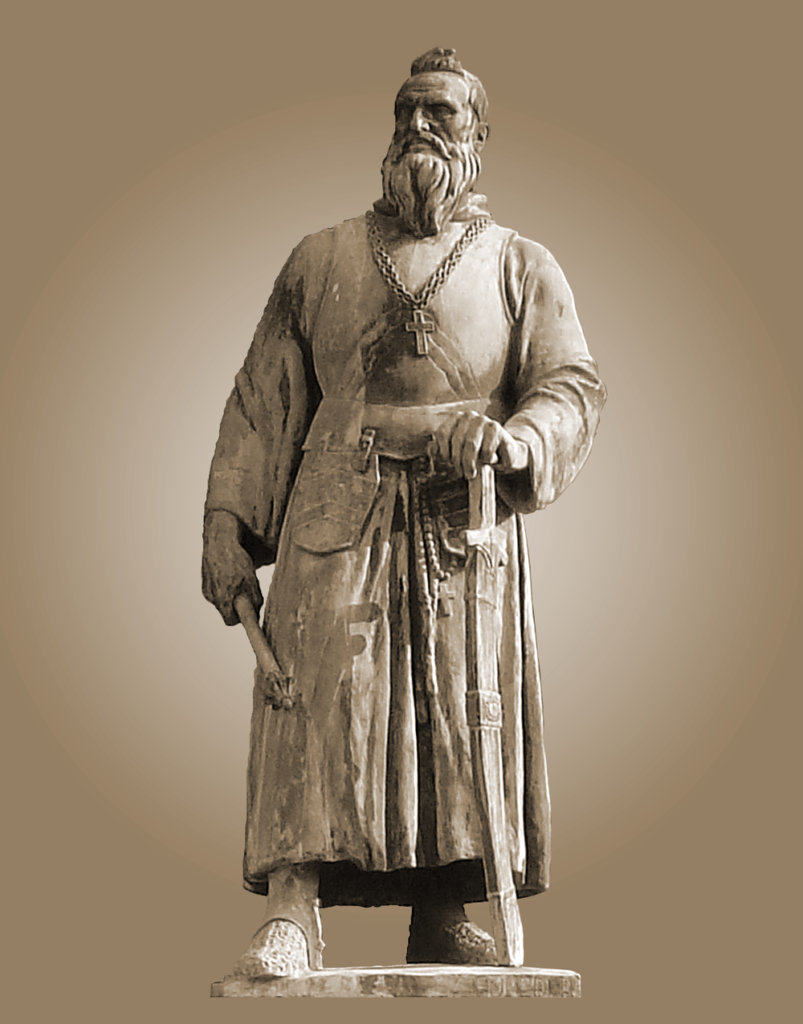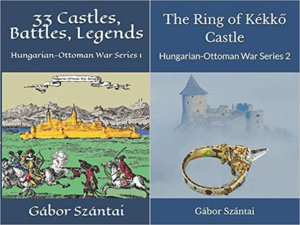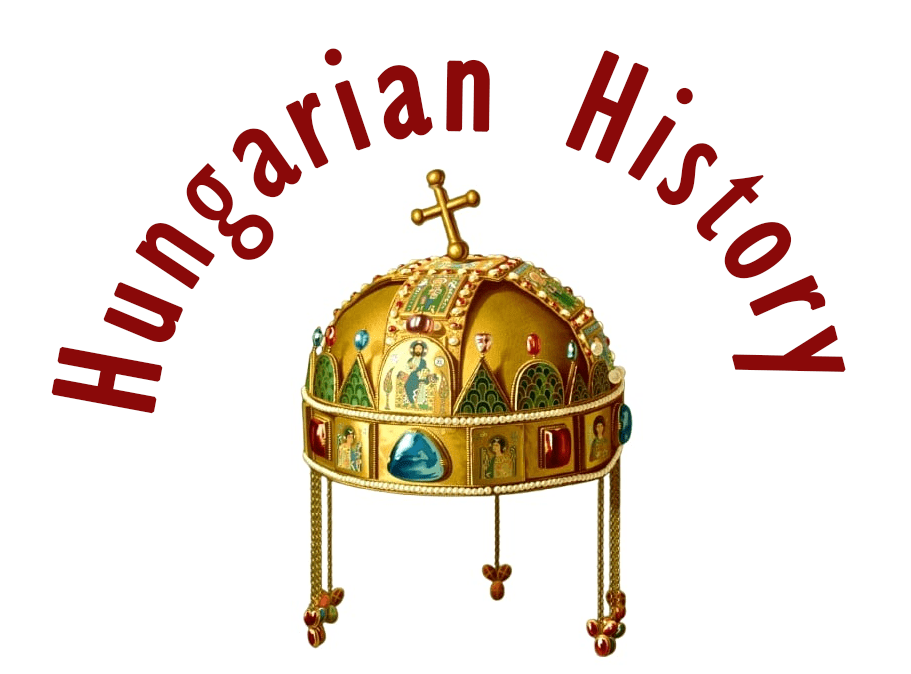
The long-awaited heir to the throne of King Ulászló II was born only after great hardship and suffering.
Even the Queen’s pregnancy was not as trouble-free as the previous one, for she was often forced to stay in bed, so weak was her body, as confirmed by contemporary Venetian accounts.

Queen Anne was extremely popular in Hungary, both because of her beauty and because of her decisive action, which made her both king and queen of the country, as she exerted a strong influence on her husband, King Ulászló II, who loved her dearly. The Queen was also able to trace her lineage back to the Árpád monarchs, who were closely related to the dynasties of Aragon, Sicily, and Naples.

Lajos was born stillborn on 1 July 1506. The only way to keep him alive was to place him in the split stomachs of pigs to keep his temperature stable. This was the incubator for Prince Lajos, and it was thanks to the ingenuity of the medical science of the time and the excellent doctors of King Ulászló II that his son survived. His mother, Anne of Candale, however, could not be saved: she died of childbed fever three weeks after giving birth. King Ulászló fell into a deep depression and mourned her until the end of his life.

To secure the crown for his only son, his father had him crowned King of Hungary in Székesfehérvár on 4 June 1508 and King of Bohemia in Prague on 11 May 1509. Thus, on his father’s death, the then 10-year-old son was able to take the throne without any problems. Lajos was an intelligent child. His father wanted his son to have a careful education, so he was taught first by Girolamo Balbi (Jerome Balbus) and then by James Piso (two of the most important poets of the time). He was taught the Czech language by the Provost of Vyšehrad, Dětřich. He was fluent in six languages: Hungarian, Latin, Czech, Polish, German, and French, and also understood Italian.

Ulászló suffered a stroke in the last years of his reign. Perhaps it was why he was later nicknamed Vladislaus Dobže (or very well known as Dobžse László). In the summer of 1515, the Habsburg-Jagello marriage treaty led to a Polish-initiated meeting in Vienna between King Ulászló II of Hungary, King Sigismund Jagelló of Poland, and Emperor Maximilian Habsburg of the Holy Roman Empire. The costs of the meeting itself were paid for by the Augsburg Fuggers, and Jacob, the head of the banking house, was present in Vienna. The reason for this was that the 1514 Diet decrees contained provisions that were against the interests of the Fuggers.

At the Viennese summit, the three monarchs decided to marry the infant Lajos to Maria Habsburg, the granddaughter of Emperor Maximilian. Maria was also the younger sister of Habsburg Ferdinand, and she moved to Innsbruck, where she was educated until 1521. On the Viennese summit, they agreed that in the event of Ulászló’s death, the guardians of Lajos would be Maximilian and the Polish Sigismund. In addition, Maximilian adopted Lajos as his son. According to some historians, this treaty permanently tied Hungary to the Habsburgs.

On 13 March 1516, two years after the suppression of the peasant uprising led by Dózsa György, Ulászló II died at the age of 60. Although the Hungarian nobility decided, based on the 1505 decree of the Rákos Diet, that they would no longer elect a non-Magyar as king, Ulászló’s son was allowed to inherit the throne.

According to the Viennese treaty, the foster parents of Lajos became the bloodthirsty and greedy Báthory István and the lecherous George of Brandenburg (1483-1543). The latter introduced the young king to a very licentious lifestyle and taught him the art of martial arms. Count Brandenburg was a cousin of the Holy Roman Emperor Maximilian I. Thus, Lajos became not only an excellent fencer but also a good dancer who loved feasting and hunting. All current sources concur that he harmed the formative personality of the juvenile Lajos. He exposed him to excessive alcohol consumption and promiscuity. After his removal from the king’s court in 1525, the youthful monarch moderated to a greater extent.

A fun fact: we have a record that Lajos purchased a manuscript about longsword fencing. He also had a natural son, whose name was Wass or Lantosh János; his mother was Angelitha Wass, the former lady-in-waiting of Anna of Foix, the mother of King Lajos II.

The young king’s legacy was an emptied treasury and a country divided by party infighting. He took the coronation oath on 11 December 1521. Lajos was the third and last Hungarian king of the House of Jagelló. The king was considered to be of age, but affairs were handled by a royal council of 28 members. However, Lajos proved to be a talented man, presiding over council and court sessions, and was a great conductor of negotiations.

Another interesting note: after the death of Holy Roman Emperor Maximilian, a new emperor had to be elected, and the young Hungarian was a candidate, supported by even the Pope. However, Habsburg Charles was able to bribe the electors by obtaining a terrible loan of half a million thalers from the Fugger bankers. Remember, the Fuggers were the ones who got rich from selling letters of indulgences and from the wealthy copper/silver mines of Hungary.

In June 1521, Mary traveled to Hungary and was anointed and crowned Queen of Hungary. Everybody said that the young couple fell in love when they were reunited in Buda. At first, because of her youth, Queen Mary had no influence on the politics of Hungary and Bohemia, and she cared only for feasting and luxurious living. Her court was full of Germans and Dutch who provided a base for the interests of the House of Habsburg. By 1524, Mary had bargained for considerable authority and influence. In 1525, she took control of a powerful political faction and neutralized the so-called ‘national’, also known as the Hungarian, faction.

Habsburg Maria had scattered the treasure of the Hungarian kingdom, while she had vehemently attacked the idea of a peace treaty between the Ottoman Empire and Hungary. Such a treaty was not unheard of, however, as the Turks had similar truces with Venice and Poland at the time. She did not take care of the unpaid soldiers on the Military Frontier and was accused of overspending in such a dire situation.

The queen’s lavish spending did not help Lajos’ reputation. The young king was trying to grow up to the size of the Turkish threat and was desperate for measures to stabilize the financial chaos in his kingdom. He took back the mining and coin minting rights from the Fugger family in order to raise funds, but this was in vain and only made things worse. The Fuggers left the country but took away all the mining equipment, even the miners, so the king received no profit. Soon, the Fuggers had to be called back. But they took revenge, and they successfully sabotaged the king’s efforts to obtain loans from other European sources. Did they need such a king for a long time?

In 1520, Hungary was in a state of near anarchy under the rule of the magnates. The king’s finances were a shambles; he borrowed to meet his household expenses, even though the king’s income amounted to about a third of the national income. The country’s defenses weakened as border guards went unpaid, fortresses fell into disrepair, and initiatives to raise taxes to strengthen defenses were stifled. By 1521, Sultan Suleiman the Magnificent was well aware of Hungary’s weakness.

When General Tomori Pál and the Voivode of Transylvania, Szapolyai János, tried to persuade Lajos to sign an armistice with Sultan Suleiman, he refused, listening to the Austrian supporters of his queen’s court. His queen suggested that a true knight should defend Christianity at all costs. Note that it was no problem for the French and the Poles to make a truce with the Turks.

As a result, Lajos refused to pay the annual tribute to Suleiman, the queen’s men had the Ottoman ambassador executed, and his head was sent to the Sultan. Lajos believed that the Papal States and other Christian states, including Charles V, Holy Roman Emperor, would help him.

The Ottoman Empire declared war on the Kingdom of Hungary in 1521. Nándorfehérvár (Belgrade) was defended by 700 unpaid warriors who held it for 66 days without any help. The nobles did not join the king, who set out to relieve the castle. By all means, his army fell apart due to a disease, and even Lajos fell sick. The fall of the fortress was blamed on the queen, who was said to have taken the money that was to be sent to the southern borders. The chaos grew.

From February 1522 to May 1523, Lajos stayed in Bohemia to settle affairs there and to get help to fight the Turks, and he did a good job there. On 4 May 1523, he called a Diet in Buda, where he deposed Báthori from his position as a Palatine and reclaimed the royal pledged estates from Szapolyai. The Szapolyai brothers were greatly angered by this. Lajos showed personal bravery when he rode alone and unattended to the hostile camp of his opponents. However, the Queen’s German, mainly Lutheran, influence grew stronger at court. Da Burgio, the papal envoy, reported directly to Rome that Hungary was being governed by the Germans.

In 1523, Tomori Pál won another victory over the Turks, but as there was no money for military expenditure, the lasting defence of the borders could not be effectively ensured. Some generalize that Lajos made a tactical error in trying to stop the Ottoman army in an open-field battle with a medieval army, with an army of insufficient size. Others say that he could not have stayed in Buda because the nobles would not have followed him. But nobody says he was a coward. In Hungary, the king was obliged to lead the army into battle in person. Lajos simply had no choice; he could not have remained behind the well-defended walls of Buda without losing his reputation.

He had been told days before he left for Mohács that his entire army could only hold off the Turks for two hours. He should have waited for the Bohemian mercenaries coming from the west and the troops of the Transylvanian voivode, Szapolyai, at Buda. But his wife and her Austrian party insisted that he should fight the Turks on a grand scale, as befitted a defender of the faith. Yet, it was known that Sultan Suleiman would have been satisfied with some taxes from Lajos and a corridor to Vienna… Everyone knew that the king’s action in fighting him was suicidal.

You can read some more details about the events leading to Mohács on my page: https://www.hungarianottomanwars.com/essays/the-road-to-the-battle-of-mohacs-1526/
Before the battle, the king himself replied to those in the council meeting who had accused him of idleness, saying: “Tomorrow, with the help of the great God, I will go with you in person where others are reluctant to go without me.” In his speech to the army after the formation of the battle order, King Lajos said that “for the Homeland, for the holy religion of Christ God, for our spouses and children, we are destined to the end, even to death.”

He encouraged his soldiers by saying that “God himself will come down from on high to those who fight for his holy religion, the salvation, so to speak, is placed in our hands, not only of the homeland which the enemy has come to conquer, but also of the whole Christian world.” No, King Lajos was not a coward.

He died in the Battle of Mohács in 1526. According to the official academic version, he drowned in a tributary of the Danube River, but others say he was murdered either by Szapolyai György or assassinated by the Queen’s bodyguard, Czetteritz. This year is considered the end of the Hungarian Middle Ages, making King Lajos II the last medieval Hungarian king.

I dedicated two podcasts to this topic, where I described the Battle of Mohács and the mysterious death of the king:
Mohács: https://www.hungarianottomanwars.com/hungarian-history-podcast-episode-8-mohacs-1526/
The death of the king:
https://www.hungarianottomanwars.com/hungarian-history-podcast-episode-9-the-death-of-the-king-1526/

The Battle of Mohács was not the disaster it’s often made out to be. It became one—because the king died. And with him died Hungary’s unity. What followed was civil war and division. The so-called Dual Kingship tore the country into two parts: the western part of the country was ruled by King Habsburg Ferdinand, while the eastern part was governed by King Szapolyai János. However, the Turks could occupy the middle section of the country only after 1540.

Dear Readers, I can only make this content available through small donations or by selling my books or T-shirts.
Please, support me with a coffee here: https://www.buymeacoffee.com/duhoxoxa
You can check out my books on Amazon or Draft2Digital. They are available in hardcover, paperback, or ebook:
https://www.amazon.com/dp/198020490X or at https://books2read.com/b/boYd81

My work can also be followed and supported on Patreon: Become a Patron!http://Become a Patron!
Become a Patron! Donations can be sent by PayPal, too: https://tinyurl.com/yknsvbk7


https://hungarianottomanwars.myspreadshop.com/all
Subscribe to my newsletter here: https://tinyurl.com/4jdjbfkn

